
Low global steel prices in December quarter sent Tata Steel Ltd into the red, with India’s largest private sector steelmaker reporting a consolidated net loss of ₹1,228.53 crore against net profit of ₹1,753 crore in the year-ago period.
Consolidated Indian operations reported PAT was ₹1,194 crores during the quarter against ₹2254 core in the corresponding period of the previous year.
Consolidated revenue fell 8.9 percent on year to ₹35,520 crore during Q3, even though steel sales rose 13 percent to 7.31 million tons (mt) from 6.47 mt a year ago.
Operating profit or EBIDTA per ton fell to ₹5,003 from ₹10,404 in Q3 FY19.
“Selling results reflects sequentially lower steel realizations. Cost improvement is primarily due to lower coal cost and lower consumption of purchased pellet. Volume mix impact primarily due to higher deliveries, partially offset by adverse mix impact due to higher exports,” Tata Steel said in an investors’ presentation.
Total deliveries grew 17 percent on quarter with 15 percent increase in domestic deliveries; despite 3 percent decline in India’s apparent steel consumption.
The company maintained automotive segment deliveries on sequential basis amidst 13 percent decline in auto industry production.
Branded products and retail segment and industrial product and projects segment deliveries grew 22 percent and 12 percent on quarter, respectively.
“In India, our business model helped us counter the slowdown as we successfully penetrated new markets and expanded our customer universe. We were also able to maintain our sales to the auto segment despite the sluggishness faced by the auto industry,” TV Narendran, CEO and managing director of Tata Steel said.
Both of its recent acquisitions, Tata Steel BSL and Tata Steel Long Products, delivered operational improvements.
Esta historia es de la edición March 2020 de Steel Insights.
Comience su prueba gratuita de Magzter GOLD de 7 días para acceder a miles de historias premium seleccionadas y a más de 9,000 revistas y periódicos.
Ya eres suscriptor ? Conectar
Esta historia es de la edición March 2020 de Steel Insights.
Comience su prueba gratuita de Magzter GOLD de 7 días para acceder a miles de historias premium seleccionadas y a más de 9,000 revistas y periódicos.
Ya eres suscriptor? Conectar

Steel's Net Zero mission
The country’s commitment to achieving Net Zero within a targeted timeframe will now propel its steel sector towards a sustainable future in line with global trends.
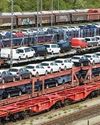
Fuel Price Hike, Supply Chain Disruption Hurt Festive Sales
Supply chain disruptions and fuel price hikes have hurt festive sales in a big way as most auto majors posted decline in sales in October.

Seaborne coking coal offers remain range-bound
Seaborne coking coal offers moved in a narrow range in October amid global supply tightness and healthy spot demand.

Global crude steel output down 8% in September
China manufactured 74 mt in September, fall of 21% y-o-y while India’s production went up by 7% to 10 mt.
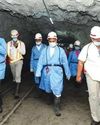
MOIL embarks on expansion projects
“Even though our country is blessed with manganese ore reserves, we import 50% of the domestic requirement. We have to lower our import dependence and save precious foreign exchange.” Ram Chandra Prasad Singh, Steel Minister

Iron ore handled by major ports down 17% in H1
The 12 major Indian ports handled 27 mt of iron-ore during H1 of 2021, down by 17% from 33 mt recorded for the corresponding period of previous year.
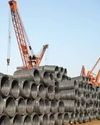
Shrinking China output to boost India exports
“In the third quarter of 2021, the company actively responded to the pressure from external policies, such as production curtailment and dual control system on energy consumption and intensity, as well as coal resource shortage and surging prices.” Baoshan Iron and Steel Co Ltd
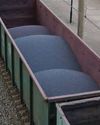
Indian Railways' iron-ore handling up 25% in H1
Indian Railways in April-September of 2021 (H1) transported 84 mt of iron ore, up by 25% over 67 mt during April-September 2020.
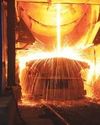
September crude steel production up 7.2% y-o-y
India’s crude steel production in September 2021 grew 7.2 percent to 9.547 million tons (mt) over September 2020 but was down by 3.2 percent from August 2021 output, provisional steel ministry data showed.

“Five enablers: way forward to sustainable cleaner steel”
Right and scalable technology, appropriate policy guidance by government, access to finance to fund transition, willingness of customers to pay for cleaner products and infrastructure for use of new technologies are the need of the hour for the sustainable and cleaner steel industry, according to Madhulika Sharma, Chief Corporate Sustainability, Tata Steel.